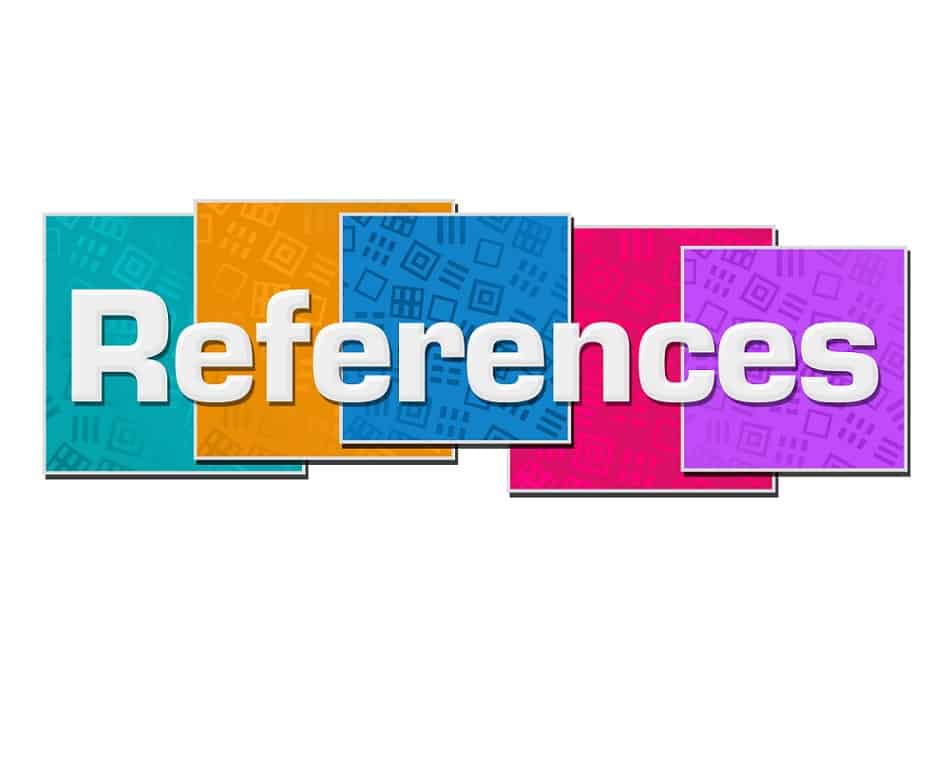Chapter 1: The Essential Components and Requirements of a Doctoral Thesis
Writing a doctoral thesis is an intellectual adventure, and one best undertaken with a sound understanding of exactly what the final document should and can be. Although the overall structure and individual parts of doctoral theses vary greatly according to the requirements of particular disciplines, universities and topics, as well as the preferences of individual thesis committees and students, there is significant value in listing and briefly describing the basic components of a thesis. For one, it is essential that all readers of this book understand exactly what is meant by the terminology I use for the different parts of a doctoral thesis. Secondly, an argument or sustained theory is still central to a successful thesis regardless of its topic and discipline (or disciplines in the case of interdisciplinary work), and the following list will set the stage for constructing an argument that includes the basic elements deemed necessary when reporting, analysing and discussing original research in most fields of study: that is, defining a problem, exploring it through sound methods, presenting what is discovered through that methodology and discussing those findings.
Finally, while this list and the order of its items will apply more or less precisely depending on the nature of the research you are conducting as a doctoral candidate, in many cases it will provide an underlying structure (introduction, literature review, methodology, results, discussion and conclusion) to work with when arranging the chapters and sections of your thesis, particularly if it is used in a flexible way. Remember, however, that any guidelines, style guides, thesis templates or requirements specified or provided by your university, department and/or thesis committee regarding the format, structure and content of your thesis should always be consulted and observed as priorities.
1.1 Preliminary Matter
1.1.1 Title
All theses require a title, which should appear at the beginning of the thesis, usually on a title page along with the doctoral candidate’s name and any other information required (the department and university concerned, the names of supervisors and committee members, the relevant date and the like). The title should ideally be descriptive, elegant and succinct, conveying both clearly and precisely the main topic and the nature of the thesis, and often noting key elements of the research such as the methodology, location, themes, subjects and variables involved. Depending on university requirements, a short form of the title may need to appear (along with page numbering and sometimes the candidate’s surname) in a running header (or footer) throughout the thesis. For more information on the title, see Sections 3.5.1, 4.2 and 6.1 below.
1.1.2 Abstract
Although there are a few exceptions (in the humanities, for instance), virtually all theses require an abstract, which normally precedes all other preliminary material except the title or title page. An abstract briefly and comprehensively summarises the contents of a thesis, situating the research in both its physical and intellectual contexts, informing the reader about the problem(s) or concept(s) investigated and the essential features of the methodology and any participants, and reporting the basic findings, implications and conclusions of the study. Depending on university or department requirements and guidelines, an abstract is usually between 100 and 400 words long (with 150 to 300 words very common) and can be formatted as a single paragraph or divided into several short paragraphs bearing headings such as ‘Background,’ ‘Methods,’ ‘Results’ and ‘Conclusion.’ For more information on the abstract, see Section 4.2 below, and for advice on constructing headings, see Section 6.1 below.
1.1.3 Keywords
The keywords (sometimes written as two words: ‘key words’ or ‘key terms’) generally follow the abstract. In most cases, between three and ten keywords are required – university or department guidelines should be checked for the appropriate number – and they are usually arranged alphabetically. The keywords should be terms that not only represent the central concepts in the thesis, but also are likely to be used by readers seeking information of the kind contained in the thesis. For more information on the keywords, see Section 4.2 below.
1.1.4 Dedication
A personal dedication is optional, but many candidates will want to include one, in which case it normally follows the abstract (and keywords) and precedes the table of contents.
1.1.5 Table of Contents
All theses require a table of contents, which normally follows the abstract and keywords. The table of contents should be a structured list of all the main parts, chapters and sections of a thesis and it should also include page numbers for locating those parts, chapters and sections. The headings, their order and the relevant page numbers listed in the table of contents must accurately match those for the parts, chapters and sections as they actually appear in the thesis. For more information on the table of contents, see Sections 3.5.2, 4.1 and 6.1 below.
1.1.6 Acknowledgements
Most theses will require some kind of acknowledgements, which can appear in either the preliminary or final matter of a thesis, depending on university requirements and personal preferences. There are two main kinds of acknowledgements: ‘those recognizing the ideas, assistance, support, or inspiration of those who have helped the author to create the work; and those listing the copyright holders in material such as figures, illustrations, and quotations reproduced’ in the thesis (Ritter, 2005, Section 1.2.10). Sometimes there are separate sections acknowledging sources of financial assistance and listing permissions for reproducing material from earlier publications, libraries, museums and the like, although such formal permissions usually are not required unless the thesis is published. If you are in doubt about whether acknowledgements are required or not, consult your university or department guidelines, ask your thesis supervisor and, if necessary, contact the individual, company or institution who holds the rights to the material you are using. See also Section 4.6.2 below.
1.1.7 List of Abbreviations
A list of abbreviations and their definitions is only necessary if you use a large number of abbreviations in the thesis, especially ones that may not be familiar to your readers, or if university or department requirements call for such a list. The abbreviations should be listed alphabetically and both they and their definitions should match exactly the abbreviations and definitions used in the thesis. When included, a list of abbreviations can appear in either the preliminary or final matter, but it is most effective at the front of the thesis where the reader will encounter it immediately; it may, however, precede or follow any acknowledgements or lists of figures or tables, so university or department guidelines should be consulted for precise positioning. For more information on lists of abbreviations, see Sections 4.6.2 and 6.3 below, and for general advice on lists, see Section 5.5.2 below.
1.1.8 List of Figures or Illustrations
If a thesis includes figures of any kind, such as charts, graphs, photographs, drawings and other visual aids that are not tables, a numerical list of them is generally required, but do check university and department requirements on this. The list can appear in the final matter, but it is usually placed among the preliminary material either before or after any list of abbreviations and acknowledgements that may be included. Figure captions, especially long ones, tend to be shortened in the list, but figure numbers and the page numbers listed for them must match the figures themselves and both their order and positions in the thesis. For figures reproduced or adapted from other sources, acknowledgements of those sources are sometimes included in the list. For further information on figures and lists of figures, see Sections 1.3, 4.4.1 and 4.6 below, and for more general guidance on constructing lists, see Section 5.5.2 below.
1.1.9 List of Tables
Occasionally, a numerical list of the tables included in a thesis is required by a university as well, and, like the list of figures, it can appear in the final matter but is most often located among the preliminary material either before or after the list of figures or illustrations. Table headings, especially long ones, can be shortened for the list, but the table numbers and the page numbers listed for them must match the tables themselves and both their order and positions in the thesis. As with figures, any sources from which tables are borrowed or adapted are sometimes acknowledged in the list. For further information on tables and lists of tables, see Sections 1.3, 4.4.1 and 4.6 below, and for more general help with lists, see Section 5.5.2 below.
Why PhD Success?
To Graduate Successfully
This article is part of a book called "PhD Success" which focuses on the writing process of a phd thesis, with its aim being to provide sound practices and principles for reporting and formatting in text the methods, results and discussion of even the most innovative and unique research in ways that are clear, correct, professional and persuasive.
The assumption of the book is that the doctoral candidate reading it is both eager to write and more than capable of doing so, but nonetheless requires information and guidance on exactly what he or she should be writing and how best to approach the task. The basic components of a doctoral thesis are outlined and described, as are the elements of complete and accurate scholarly references, and detailed descriptions of writing practices are clarified through the use of numerous examples.
The basic components of a doctoral thesis are outlined and described, as are the elements of complete and accurate scholarly references, and detailed descriptions of writing practices are clarified through the use of numerous examples. PhD Success provides guidance for students familiar with English and the procedures of English universities, but it also acknowledges that many theses in the English language are now written by candidates whose first language is not English, so it carefully explains the scholarly styles, conventions and standards expected of a successful doctoral thesis in the English language.
Individual chapters of this book address reflective and critical writing early in the thesis process; working successfully with thesis supervisors and benefiting from commentary and criticism; drafting and revising effective thesis chapters and developing an academic or scientific argument; writing and formatting a thesis in clear and correct scholarly English; citing, quoting and documenting sources thoroughly and accurately; and preparing for and excelling in thesis meetings and examinations.
Completing a doctoral thesis successfully requires long and penetrating thought, intellectual rigour and creativity, original research and sound methods (whether established or innovative), precision in recording detail and a wide-ranging thoroughness, as much perseverance and mental toughness as insight and brilliance, and, no matter how many helpful writing guides are consulted, a great deal of hard work over a significant period of time. Writing a thesis can be an enjoyable as well as a challenging experience, however, and even if it is not always so, the personal and professional rewards of achieving such an enormous goal are considerable, as all doctoral candidates no doubt realise, and will last a great deal longer than any problems that may be encountered during the process.
Interested in Proofreading your PhD Thesis? Get in Touch with us
If you are interested in proofreading your PhD thesis or dissertation, please explore our expert dissertation proofreading services.


Services
PhD Dissertation Proofreading
Our PhD dissertation proofreaders specialise in improving grammar, sentence structure, citations, references, clarity, logical flow and readability.
Master’s Dissertation Proofreading
To avoid failure and its consequences, send your dissertation to our master’s dissertation proofreading service.
Scientific Dissertation Proofreading
Our scientific proofreaders specialise in correcting and perfecting the language, editorial styles and references across all science fields.
Headquarters
Dissertation-Proofreading.com
Allia Future Business Centre
The Guildhall
Market Square
Cambridge
CB2 3QJ
United Kingdom
More Expert Proofreading Services
Journal Editing
Journal article editing services
PhD Thesis Editing
PhD thesis editing services














